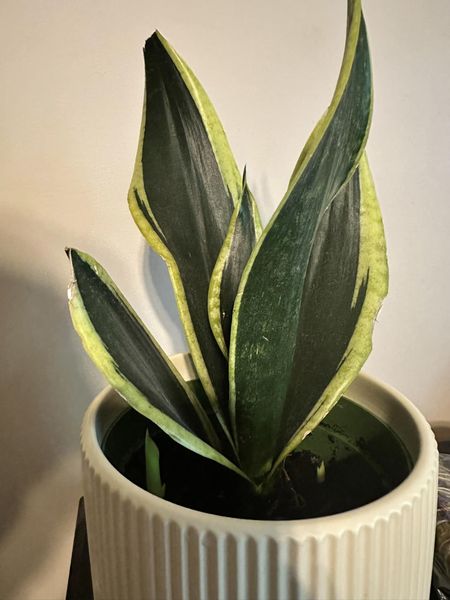
As the days grow shorter and the temperatures drop, your indoor garden faces new challenges. Among your collection of green companions, the snake plant (Sansevieria trifasciata), also known as mother-in-law’s tongue, stands out as a resilient and stylish choice. With its striking upright leaves and easy-going nature, it’s no wonder why it’s a favorite for many plant enthusiasts. However, even the hardiest of houseplants need special attention as winter approaches. In this guide, we’ll walk you through the essential steps on how to care for snake plants in winter, ensuring they thrive even when the outside world is less than inviting.
Understanding Snake Plants
What Makes Snake Plants Unique?
Snake plants are celebrated for their durability and low-maintenance care. Native to West Africa, these plants are known for their:
- Architectural Beauty: Their tall, sword-like leaves add a dramatic flair to any room.
- Air Purification: Snake plants are excellent at filtering toxins from the air, such as formaldehyde and benzene.
- Water Efficiency: They require minimal watering, making them ideal for busy or forgetful plant parents.
Despite their hardy reputation, snake plants can be sensitive to drastic changes in their environment, particularly during the winter months. Understanding their needs during this season is crucial for keeping them healthy.
Winter Care Tips for Snake Plants
1. Adjust Watering Practices
Why Less Water in Winter?
During winter, the growth of snake plants slows down significantly. This means they use less water than they do in the warmer months. Overwatering can lead to root rot, a common issue with snake plants.
Tips for Winter Watering:
- Water Less Frequently: Reduce watering to once every 6-8 weeks. Ensure the soil is completely dry before rewatering.
- Check Soil Moisture: Use a moisture meter or your finger to gauge soil dryness before watering.
2. Optimize Light Conditions
How to Provide Adequate Light?
Snake plants thrive in indirect light but can tolerate low-light conditions. However, with reduced daylight hours in winter, they may need some adjustments.
Light Management Tips:
- Place Near a Window: Position your snake plant close to a window where it can receive indirect light. East or west-facing windows are ideal.
- Supplement with Grow Lights: If natural light is insufficient, consider using a grow light to provide the necessary illumination.
3. Maintain Proper Temperature and Humidity
What Temperature Range is Ideal?
Snake plants prefer temperatures between 60-75°F (15-24°C). They can tolerate cooler temperatures but are sensitive to frost and drafts.
Temperature and Humidity Tips:
- Avoid Cold Drafts: Keep your plant away from cold windows, doors, and heating vents.
- Monitor Room Temperature: Ensure the temperature remains stable and within the recommended range.
- Reduce Humidity: Snake plants prefer dry conditions. Winter air can be quite dry, so you typically won’t need to add humidity.
4. Inspect for Pests and Diseases
How to Prevent and Treat Common Issues?
Although snake plants are relatively pest-resistant, they can still fall victim to common houseplant pests like spider mites and mealybugs, especially in dry winter conditions.
Pest and Disease Management:
- Regular Inspection: Check the leaves regularly for signs of pests such as webbing or sticky residue.
- Natural Remedies: Use a mixture of water and mild soap to clean the leaves and remove pests.
- Avoid Overwatering: Ensure good drainage to prevent fungal infections and root rot.
Seasonal Adjustments for Optimal Growth
1. Repotting Considerations
When Should You Repot?
Winter is generally not the ideal time for repotting snake plants as they are in their dormant phase. However, if your plant is severely root-bound or showing signs of distress, you may need to repot.
Repotting Tips:
- Choose the Right Time: If necessary, repot in late winter or early spring when the plant starts its active growth phase.
- Use Well-Draining Soil: Ensure the new pot has good drainage and use a potting mix designed for succulents or cacti.
2. Fertilization Practices
Do Snake Plants Need Fertilizer in Winter?
Snake plants have minimal nutrient needs during the winter months. Fertilizing them at this time can lead to an excess of nutrients, which can be harmful.
Fertilization Tips:
- Skip Winter Feeding: Refrain from fertilizing during winter. Resume feeding in spring with a balanced, diluted fertilizer.
- Monitor Plant Health: If you notice slow growth or discolored leaves, it might be time to reevaluate your fertilizing schedule in the warmer months.
Conclusion
Caring for snake plants in winter requires a bit of adjustment, but with these tips, you can ensure your plant remains healthy and vibrant throughout the season. By carefully managing watering, light, temperature, and pest control, you’ll help your snake plant continue to thrive even when the outside world is in a deep freeze. Remember, while winter can be a challenging time for indoor plants, it’s also an opportunity to refine your plant care routine and ensure your green friends are ready to flourish come spring.
